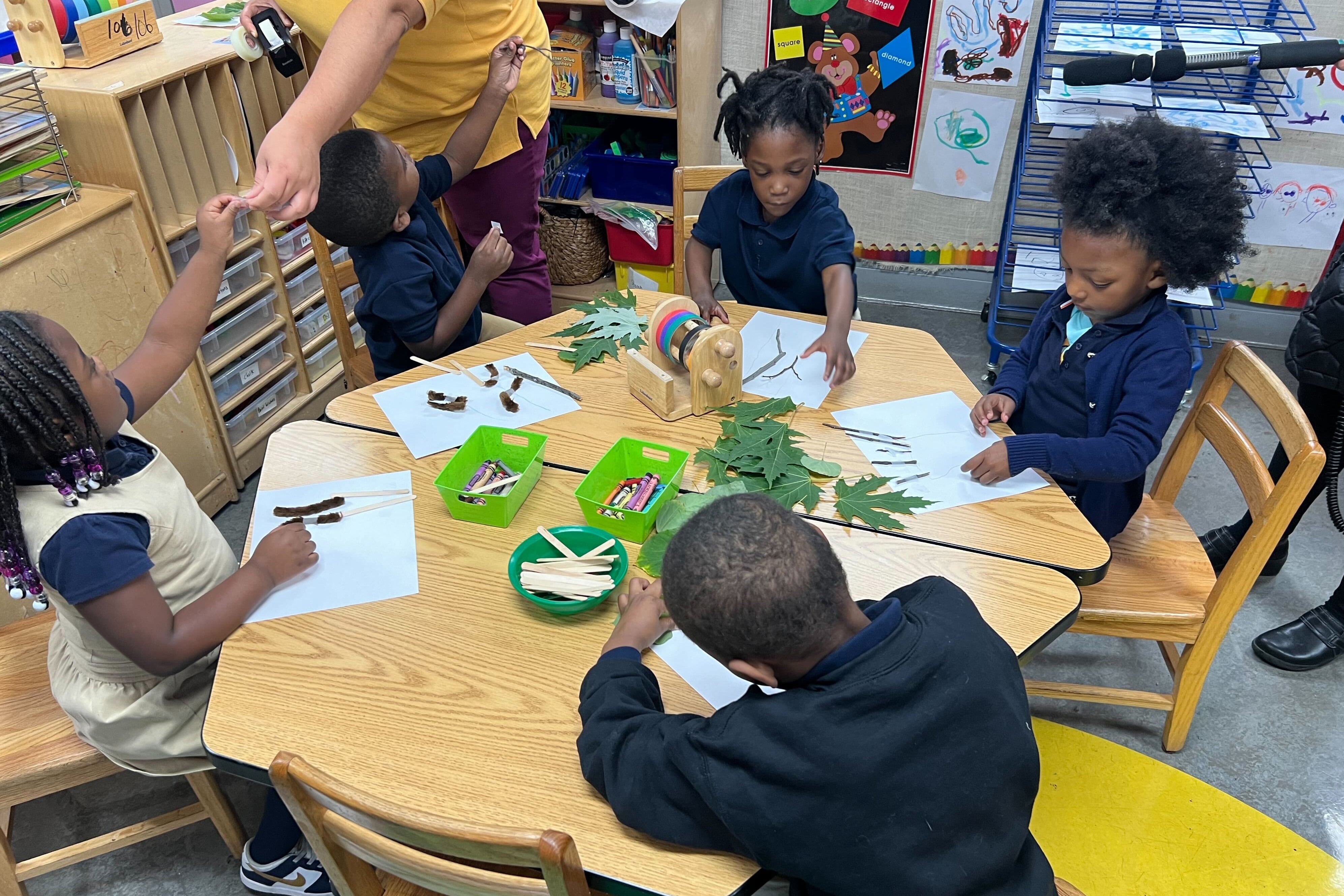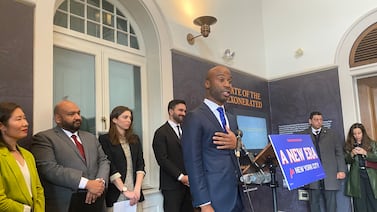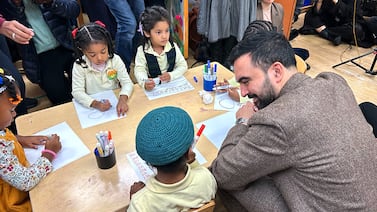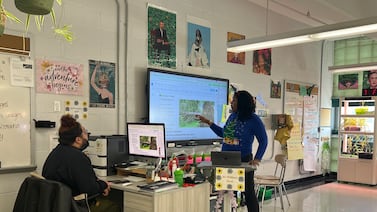Sign up for Chalkbeat Chicago’s free daily newsletter to keep up with the latest education news.
Chicago Public Schools has enrolled slightly more students this school year for a second year in a row after years of declines, district officials announced Wednesday.
As of the 20th day of school this year, CPS had enrolled 325,305 students compared to 323,251 students this time last year, according to district data. That’s less than a 1% increase from last year. The district uses the 20th day of school as the official date to take stock of enrollment and demographics each year.
Officials hinted at the slight bump last month, when by the 15th day of school 2,800 more students had enrolled compared to that day last year.
Most of the enrollment increase is in the grades before middle school, which have grown by nearly 2% compared to last year, while enrollment in grades 6 and up is flat. Hispanic students saw the greatest increase year-over-year, with nearly 1.5% more enrolled. Black students were the only group to see a drop, with enrollment declining nearly 1%. Chicago’s Black population has been decreasing over the past several years.
English language learners grew by 11% this school year, a rate larger than any other student group. That could be partly due to an increase in migrant students who have settled in Chicago from Central and South American countries, and that could also help explain the increase in Hispanic students.
More migrant students may be a boon for CPS as it hopes to boost its student enrollment. But increased student language needs could present an ongoing challenge for schools if the district doesn’t continue to staff up bilingual programs. Last year, many newcomer families settled in majority Black, low-income neighborhoods where schools did not have bilingual programs set up, making students feel lost and unable to communicate at school, according to a Chalkbeat and Block Club Chicago investigation.
Ben Felton, chief talent officer for CPS, said he felt optimistic about bilingual teacher staffing this year, noting that the district has roughly 2,000 more teachers who are certified in bilingual education, English as a second language, or both, compared to five years ago. Felton said the district has tried to recruit more bilingual educators through early job offers to those leaving school and subsidizing part of the cost for earning a bilingual education certification. He added that the district has agreed to fully cover that cost during its ongoing negotiations with the Chicago Teachers Union.
Enrollment may change as the school year goes on. By May of the last school year, enrollment had grown by roughly 7,000 students for a total of more than 328,000 students, according to a Chalkbeat analysis of preliminary enrollment data.
Before last year, CPS had seen a dozen years of enrollment declines resulting in a roughly 20% decline in students over the past decade. In recent years, school districts nationwide have also seen dips in student enrollment.
Enrollment can impact state funding for the district, because the more students it enrolls, the more money it gets. Enrollment used to be a major factor in how CPS would fund individual schools, but the district rolled out a new funding formula this year that relies less on the number of kids in a building and focuses more on the needs of individual schools.
That formula received a mixed reception this summer after many campuses saw boosts in staff and resources, but many other schools, particularly those serving relatively more affluent families, saw fewer positions they could hire for in their budgets.
Sara Kempner, the district’s executive director of enterprise data and analytics, noted a roughly 0.3% increase on this year’s 20th day compared with last year’s.
“(It’s) not a huge increase, but when we talk about attendance, every tenth of a percentage point really does add up to a lot of extra money,” Kempner said.
But even with slightly growing enrollment and attendance, CPS still has far fewer students than just a decade ago, with many schools serving just a fraction of the kids they were built for, particularly on the city’s South and West sides. That could mean tough decisions ahead for the city’s new half-elected, half-appointed school board on how to best serve schools with a small number of children. Chicagoans will vote for new board members on Nov. 5.
Mayor Brandon Johnson, who will appoint 11 of the 21 new board members, opposes closing schools, a sentiment shared by many of the candidates. Martinez and the outgoing school board last month voted on a resolution promising no school closings until 2027. State law prevents Chicago from closing schools until Jan. 15, 2025 — the same day Chicago’s new Board of Education will be sworn in.
Some candidates have not ruled out the possibility of closings. Some believe that schools can greatly benefit from the smaller class sizes that have resulted from declining enrollment and that schools could attract more kids if the district received more money.
Others believe that it’s not a good use of resources to keep large buildings operating with few students.
Last month, district leaders passed a five-year strategic plan that placed a large focus on boosting neighborhood schools, which had been a goal for Mayor Brandon Johnson on the campaign trail and continues to hold value for his administration.
Earlier this week, CPS leaders toured three schools with new STEAM programs — science, technology, engineering, arts, and math — in the North Lawndale area, which has seen student enrollment drop significantly in the last decade.
In a third grade class at Chalmers Elementary School, students worked on understanding how magnetic force works. At Collins Academy high school, students in lab coats built clay replicas of bones on mini skeletons to understand the human body.
The programs earned financial support from district and city leaders after years of advocacy from the local community. Martinez told reporters that’s one reason he believes such programs will lead to more enrollment.
“When we’re successful, having a high-quality program, what we know from history is that more children will want to come, specifically neighborhood children,” Martinez told reporters.
Although data show both Chalmers and Collins saw slight declines in enrollment from last year to this year, staff said interest is growing. According to Collins Principal LaKenya Sharpe, After Collins was designated as a STEAM school, it saw about a 20% increase in student applications compared to the previous year. The school had about 150 offers to freshmen this year, and 90 enrolled, Sharpe said.
“Parents have always [asked], ‘Do you have a medical program here? Do you have an engineering program or a drone or robotics program? Being able to say, ‘Yes,’ and, ‘We’re getting those programs’ has been awesome,” Sharpe said.
Reema Amin is a reporter covering Chicago Public Schools. Contact Reema at ramin@chalkbeat.org .






